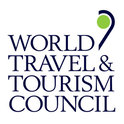New statistics reveal the ups and downs of EU tourism
Spain was the most popular EU tourist destination in 2013.
Europe is undoubtedly one of global tourism's heavyweight contenders when it comes to international travel. Research from the United Nations World Tourism Organisation (UNWTO) showed that 563 million people visited Europe in 2013, which helped amass $489 billion in tourism receipts, making the content the highest performer in the world in both areas.
More recently, the European Commission released new data, providing a detailed breakdown of the tourist market within Europe, or more specifically, the EU-28. The statistics provide an interesting look at the individual countries that contribute to tourism in Europe and how they have performed over the last few years.
Not only this, but the data reflects tourism's wider impact on the region economically as well as for specific nations within it.
The big hitters
Spain, Italy and France made up the top three most popular destinations within the EU-28, accounting for an incredible 568 million nights spent in tourist accommodation between them.
Although all three saw plenty of tourism action over 2013, it was Spain that took the top spot outright. In fact, the country represented 21.2 per cent of all tourist nights spent in the EU-28 in 2013 - an impressive feat indeed. When combined with Italy and France, these three nations accounted for almost half (47.7 per cent) of all tourist accommodation nights from foreign travellers.
Spain's eclectic mix of incredible scenery, gorgeous beaches, diverse history and colourful culture has no doubt helped the nation establish itself as the most popular spot for tourists in the EU. Although Italy and France are completely different to Spain, and each other, these nations also boast similar traits with regards to the above topics.
This could suggest that people are increasingly preferring to holiday in areas that offer much more than just one option. On the other hand, it could mean that travellers are heading to a country for a specific reason. For example the food of Italy, Spanish beaches or French culture.
Luxembourg, Latvia and Lithuania were the least visited nations but this is not necessarily a negative. The size of these countries when compared to the likes of France and Spain must be taken into account here; Luxembourg, for example, saw an increase of inbound arrivals in 2013, which helped boost its modest tourism market.
Economic impact
Perhaps as expected, Spain, France and Italy recorded the highest amount of international travel receipts over the course of last year, with these countries amassing $56 billion, $52 billion, and $38.5 billion respectively.
However, when comparing international receipts to GDP, three other nations come top, which not only reflects how important tourism is for many smaller members of the EU states but also that the overall number of tourists heading to a destination doesn't always have to be the headline figure.
Croatia (16.7 per cent), Malta (14.5 per cent) and Cyprus (13.2 per cent), recorded the highest figures in terms of GDP to receipts. To put this into context, the ratio for Spain is around 11 per cent. Croatia had 59 million tourist stays over the course of 2013, making it one of the strongest performers in Central and Eastern Europe.
Germany's residents spent the most abroad during 2013, but with the country being Europe's largest economy, many may have expected such a figure.
The future of EU tourism
It's no secret that the European continent has had its fare share of economic problems over the last six or seven years and many nations within the EU are still coming to terms with this. However, stability does seem to be returning to the region, albeit slowly.
PwC's European cities hotel forecast for 2014 and 2015 suggests that there will be some growth in terms of hotel revenues in the major cities of Europe but that there is more room for improvement.
Dr. Andrew Sentance, Senior economic advisor to PwC, said: "There is growing optimism in the European economy which is now recovering from the double-dip recession triggered by the euro crisis.
"Significant improvements in confidence and activity through the second half of 2013 mean that we now expect growth across Europe in 2014 and 2015 – even in the economies at the centre of the economic crisis."
Taken in a wider context, if this marginal growth of in hotel revenues and bookings does reflect Europe and the EU-28's prospects over the next year, the tourism market in the region could also see growth. However, there are fears that the 18-member currency club could fall into deflation, with little GDP growth being predicted for the majority of the region, according to the Economist.
The new year may well be a balancing act for tourism in the EU, especially if the economy takes a trip for the worst in Q1. That said, countries in this region have constantly had to adapt and change since the financial crisis in 2007 in order to attract travellers and it may be a case of doing so again in 2015.
About WTTC
The World Travel & Tourism Council (WTTC) represents the global Travel & Tourism private sector. Members include 200 CEOs, Chairs and Presidents of the world's leading travel & tourism companies from all geographies covering all industries. For more than 30 years, WTTC has been committed to maximising the inclusive and sustainable growth potential of the Travel & Tourism sector by partnering with governments, destinations, communities, and other stakeholders to drive economic development, create jobs, reduce poverty and foster peace, security, and understanding in our world.
